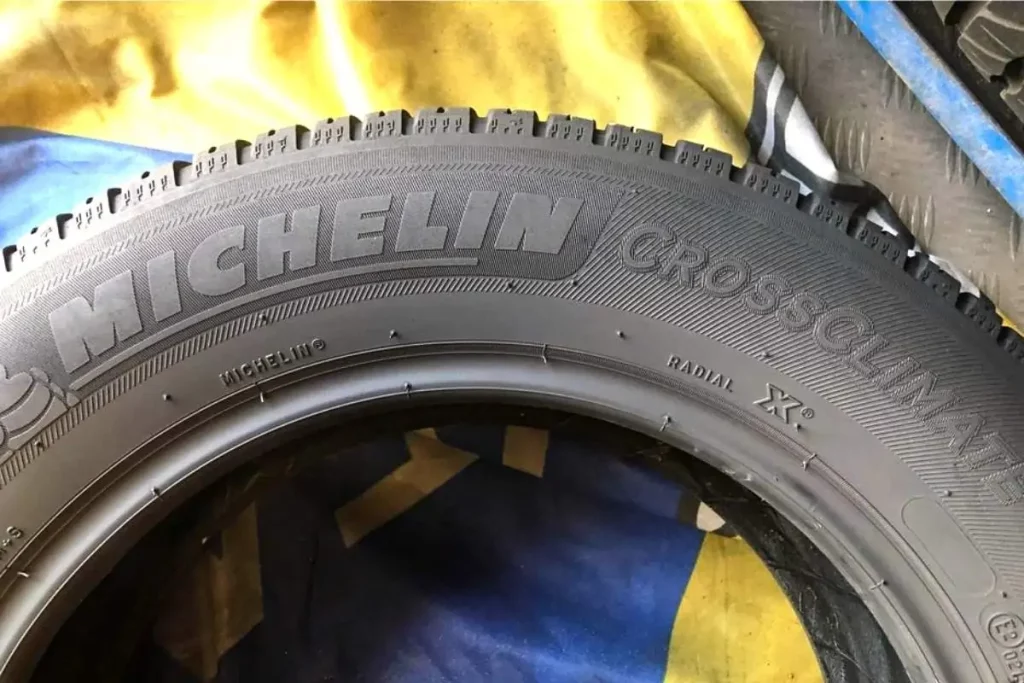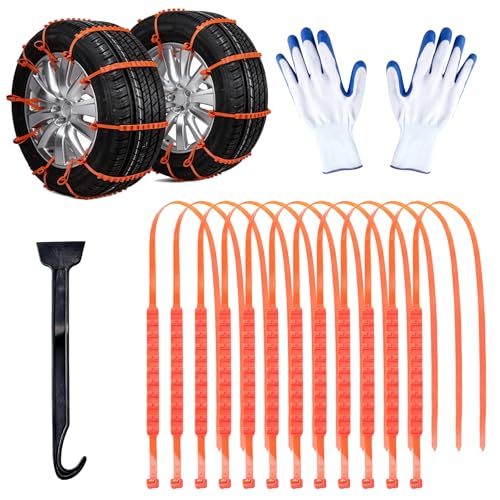Michelin Crossclimate 2 tires improved upon the Michelin CrossClimate Plus tires, with some notable changes.
However, with new products come new problems, and today we’re exploring the most common issues customers have noticed when driving with CrossClimate 2 tires.
Michelin CrossClimate 2 problems range from loud noises to bad road feedback, reduced fuel economy, drifting, low durability, and poor performance on ice. Fixing these issues often involves more careful driving, slower speeds, and ultimately, tire replacement.
Keep on reading to learn more about the specifics of these problems with Michelin CrossClimate 2 tires.
We’re covering the most consistent issues customers have reported and answering frequently asked questions, such as how long do CrossClimate 2 tires last?
Let’s get into it!

What Problems Do Michelin CrossClimate 2 Tires Have?
Michelin’s CrossClimate 2 tires are decent for most drivers, but you should be aware of the common complaints that customers have provided in dissatisfied reviews on sites like reddit, forums etc.
The following problems with CrossClimate 2 tires include the following:
- Tires Are Loud
- Tires Reduce Vehicle Fuel Economy
- Poor Road Feedback
- Poor Ice Performance
- Excessive Water Spray
- Drifting and Slow Response
- Low Durability
Tires Are Loud
Customers report mixed experiences when it comes to the noise level of these tires.
But it’s worth noting that some drivers have become annoyed by the sound that these tires make on the road, especially when driving at higher speeds, like on highways and interstate roads.
And when compared to competitor tires, such as Bridgestone tires, CrossClimate 2 tires are known to be much louder.
Other complaints include the fact that these tires tend to create excessive noise when driving over obstacles, even the smallest potholes, bumps, and cracks in the road.
How to Mitigate the Road Noise from The CrossClimate 2’s?
The number one thing to do when your tires are too loud is to ensure they are properly inflated. With a tire pressure gauge, you can check if your tires have the correct air pressure.
Gauge
JACO ElitePro Digital Tire Pressure Gauge – Professional Accuracy – 100 PSI
✔ Pro Accuracy
✔ Strong & Rugged
✔ Advanced Engineering
✔ Smart Display
The lower the air pressure, the more the tire’s surface area comes into contact with the hot top. You want to reduce that with proper air pressure.
Otherwise, you will need a compressor if the air pressure is insufficient.
Inflator
AstroAI Tire Inflator Portable Air Compressor Air Pump for Car Tires
✔ Toughultra Technology, Enhanced Durability
✔ Programmable Inflation
✔ Compact Size & Easy to Store
✔ Smart Preset & Auto Off
✔ Easy Nighttime Use
The only other thing you can do is soundproof your vehicle’s interior. Installing these kinds of tires means dealing with the noise that they create.
Kilmat
KILMAT 80 mil 36 sqft Car Sound Deadening Mat,
Experience the superior adhesion of self-adhesive automotive butyl and foil sound deadening material, boasting an 80 mil thickness. KILMAT is a user-friendly and DIY-friendly solution, providing efficiency and ease of installation for optimal soundproofing results.
Check PriceSoundproofing your vehicle’s interior is not cheap, but you can accomplish it by filling the doors, trunk, and/or wheel arches & installing vibration dampers on the car floor with sound-proofing material.
Tires Reduce Vehicle Fuel Economy
Buying the wrong set of tires can affect more than just your driving traction and riding comfort; it can also affect your fuel economy and how much you spend on gas.
One of the customers’ complaints about Michelin CrossClimate 2 tires is that their vehicles significantly dropped in gas mileage following tire installation.
Customer reviews of these tires on Michelin’s website include claims such as:
- Gas mileage dropping by 3 mpg
- Gas mileage dropping by 5.5 mpg
- Loss of about 10% fuel economy after 2,000 miles of driving with CrossClimate 2 tires
- Loss of 3-5 mpg
Fuel Economy Fixes
Luckily, poor fuel economy isn’t really reason enough in itself to replace your tires.
You can improve your car’s gas mileage to compensate for the tires by taking the following troubleshooting steps:
- Maintain correct tire pressure at all times
- Don’t spend lots of time idling
- Avoid fast accelerations and hard braking
- Use cruise control functions when possible
- Use your vehicle’s “eco” feature if it has one
- Eliminate excess weight from your vehicle’s cabin and de-clutter
Poor Road Feedback
Sadly, these tires are not well-rated in terms of road feedback issues.
You’re going to notice that when you drive with these tires, you’ll face significant feedback that you can feel through the steering wheel of the car when you go over potholes and rough terrains.
Poor Ice Performance
The CrossClimate 2 tires drive decently well on snow and can handle some driving on icy roads, but they can’t handle very much ice in general.
Of course, these tires aren’t as capable as “snow tires” when it comes to driving on winter roads.
And you may notice excessive sliding on icy roads, especially if you aren’t driving defensively.
The only straightforward fix is equipping them with some snow and ice chains.
Double check you’re getting the correct fit for your tire size.
Excessive Water Spray
When driving in rainy conditions or on wet roads, the thick and directional tread of Michelin CrossClimate 2 tires tends to send water flying away from the bottom of the vehicle.
While this is a good feature and can protect your vehicle from hydroplaning, it will also create a lot of water spray onto the back end of your vehicle.
This is more of an aesthetic problem and an annoyance to car owners who want to keep their vehicles looking spotless.
But the buildup of spray on the vehicle surface can lead to oxidation and damage over time if not cleaned regularly.
Drifting and Slow Response
One less common issue with CrossClimate 2 tires is reports of vehicle drifting and slow response to the steering wheel.
Customers have noted that, at times, these tires cause the vehicle to drift from side to side or pull to a certain side.
One of the ways to avoid this occurrence is to make sure that you always keep two hands on your steering wheel.
You can keep better control of your vehicle that way, even if the tires are causing issues.
Low Durability
One of the most important qualities in a good set of tires is durability.
You want to be sure that you can drive on rough roads and come in contact with potholes without getting a leak or flat.
Unfortunately, some customers have noticed that CrossClimate 2 tires are not very durable, requiring frequent plugging for punctures and air leaks.
Some customer reviews noted that Michelin CrossClimate 2 tires were susceptible to picking up screws, nails, and other rough objects when driving over them on the road.
This is worth noting, as puncture damages can become detrimental, and if your tires get punctured in the sidewall, you’ll have to replace them.
FAQs
Are Michelin CrossClimate 2 Tires Any Good?
Michelin CrossClimate 2 tires work well in certain conditions, such as wet/rainy roads, and they make a decent tire to drive on the snow.
Otherwise, they do have notable flaws, such as loud driving and negative effects on vehicle fuel economy.
Customers note various problems with these tires, but they’re still a decent Michelin product choice.
Are Michelin CrossClimate 2 Tires Noisy?
Reviews are mixed regarding the noise level of these tires on the road.
While some customers experienced very loud road noises when driving with CrossClimate 2 tires (especially at high speeds), other customers were pleasantly surprised by the low noise output they experienced while driving.
How long Do Michelin CrossClimate 2 Tires Last?
Michelin CrossClimate 2 tires are designed to last up to 60,000 miles of driving, backed by the warranty.
However, many drivers have noticed that these tires begin to show issues such as poor fuel economy and rough driving as soon as 2,000-4,000 miles after installation.
What Is the Difference Between CrossClimate 2 and CrossClimate Plus?
The CrossClimate 2 tires are seen as an improvement on the CrossClimate Plus tires. CrossClimate 2 tires integrate better grip and traction, decreased rolling resistance, better snow driving, and improved wet and dry braking.
CrossClimate 2 tires also incorporate improved protection against hydroplaning on wet roads.
Final Thoughts
When choosing an ideal set of tires, you want a combination of features, such as minimal noise, smooth driving, durability, good wet/dry traction, and long-lasting tread.
Customers have reported numerous Michelin CrossClimate 2 problems in product reviews and ratings – most notably, the tires are noisy, have poor traction on ice, and significantly lower a vehicle’s fuel economy.
Before buying the Michelin CrossClimate 2 tires for your vehicle, be sure to assess the potential issues you could face and how these tires will work for your driving needs.
Sources
https://www.michelinman.com/auto/tires/michelin-crossclimate2





